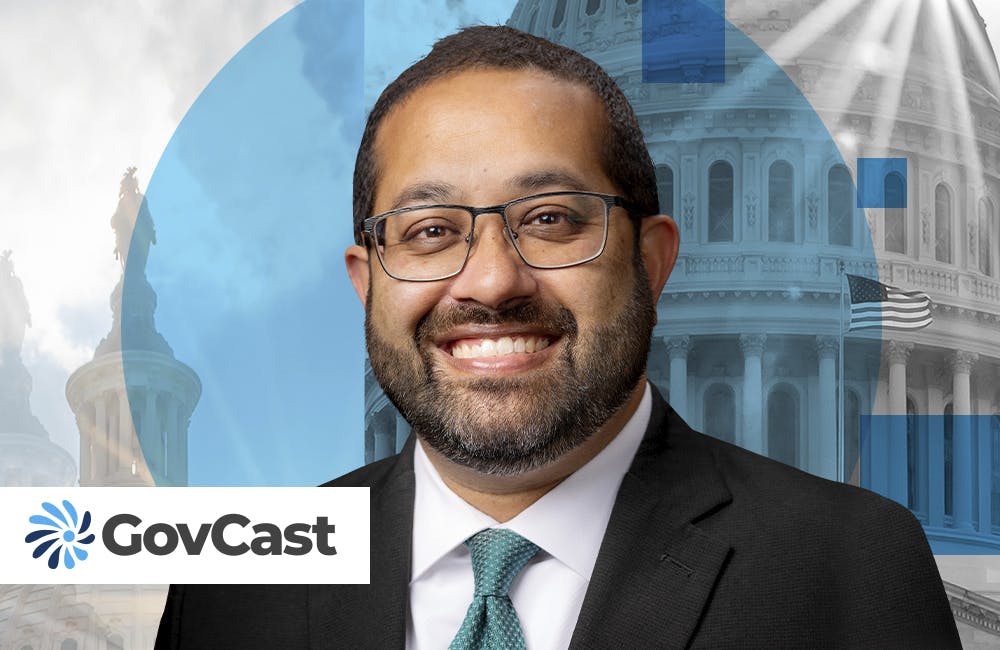Federal Leaders Call for More IT Modernization Funding
The long-term technological dependence agencies face amid the pandemic highlights the need to invest in modernization.

Federal IT leaders stressed the importance of making IT modernization and investment an integral part of agencies’ missions and called for increases to the Technology Modernization Fund (TMF) in order to meet new demands in telework and delivery of government services.
At an FCW virtual event Tuesday, Rep. Gerry Connolly, a long-time advocate of federal IT modernization, discussed how the COVID-19 pandemic exposed technology’s necessity to the execution of federal aid and services, such as the Small Business Administration’s loan aid and the IRS’s direct payments to Americans upon the start of the pandemic.
Legacy IT has made it difficult for agencies to scale up the delivery of aid to Americans. The $1 billion addition to the TMF from the the new “skinny” version of new proposed pandemic relief bill, the HEROES Act, will likely not be enough to push agencies to where they need to be technologically, Connolly said.
The TMF received $25 million for fiscal year 2021 in initial appropriations, making the $1 billion addition significant. Connolly noted, however, that the long-term nature of the pandemic and continuous technological strain it has put on agencies to deliver aid at speed and en masse is pointing to how Congress needs to push more money and focus on modernizing federal agencies’ IT portfolios.
“We have to prepare ourselves for the fact that we’re going to be living with changed circumstances in the workplace, in our personal lives, for a while,” Connolly said. “I don’t consider that a distraction from what we’re doing in response to the pandemic. I consider it a lesson learned that is absolutely essential because you have to see IT as integral to the mission.”
Connolly argued that putting more money into the TMF will incentivize agencies to prioritize modernization efforts, showing agency leaders that Congress is signaling the decommission of expensive legacy systems and push for cloud adoption, data-driven tools, telework capabilities and other strides to improve federal employee work and delivery of services.
Deputy Federal CIO Maria Roat echoed Connolly’s arguments, saying the federal IT community has done a lot to scale up resources and services to meet the demands during the pandemic, but there is still work to be done.
“This digital transformation is just not a one-off activity and requires sustained long-term investments,” Roat said. “The [Modernizing Government Technology] Act enabled agencies to leverage the TMF … and establish IT working capital funds to finance and undertake multi-year modernization projects. Achieving this enterprise-wide modernization and migration off these legacy requires mission partners, along with those in the C-suite to be champions and assume ownership and accountability for outcomes.”
Like Connolly, Roat noted that COVID-19 has also put a spotlight on the way digital services, modern IT solutions and cloud-based infrastructure are paving the way for agencies to meet the demands of current and future crises.
“Investments in data accelerated and enabled our ability to respond throughout the pandemic using technology tools, and applying advanced analytics and AI informed and continues to inform decision-making,” Roat said. “These investments over the last several years in cybersecurity, modern infrastructure, zero-trust networks, microservices and the flexibility and scalability of cloud-based solutions gave us the ability to configure commercial platforms with resumable services.”
But to make further progress, the government must continue changing its operations and business models to remain relevant and successful at meeting the needs of the public.
“The public and federal employees expect that the federal government changes and strives to provide more seamless services to the public that it services, overcoming historical barriers,” Roat said. “Identifying new opportunities as they emerge is necessary to transform technology in the government.”
Federal agencies can make a stronger case for IT modernization while also delivering new technological solutions by fostering a greater collaborative relationship between federal IT personnel and their customers, Roat continued. Human-centered design is critical to this, and a focus on working with the customer will help ensure improved digital experiences; consistent, secure, mobile-friendly and accessible services; and better workplace experiences for federal employees.
“As we look at human-centered design and customer experience, there has to be a close relationship between the developer and the user with cloud-based solutions [for] rapid-prototyping, creating an intuitive user experience and adopting a customer-centric mindset. These are key ingredients for success. We need to broadly adopt these tenants across all departments and agencies, and the better we understand our customer, the better we can leverage technologies such as AI and machine learning.”
With Roat’s arguments for weaving new technology more seamlessly into the federal employee experience and delivery of services to the public paired with Connolly’s argument for IT modernization, agency leadership needs to see IT as a driver of organizations’ missions.
“We’ve learned something about IT and its criticality in this kind of circumstance and economic collapse, related to a crisis of unprecedented proportions,” Connolly said. “This is an opportunity here to make the investments we have not made in the past, and this is an opportunity to understand, going forward, that IT is not something nice to have. It is integral to the very mission of your agency.”
This is a carousel with manually rotating slides. Use Next and Previous buttons to navigate or jump to a slide with the slide dots
-

DOD Has a New Cyber Resiliency Assessment Program
Defense officials tout the continuous assessment feature and scalability of the new program amid increased cyber threats.
5m read -

Transitioning Systems for Modern Agency Missions
IT modernization is a constant process necessary for improving customer service, mission delivery and collaboration.
40m watch -

Cyber Resilience and Recovery Amid Evolving Cyber Threats
Data durability is a key aspect of NIST’s cybersecurity framework for public and private organizations.
21m listen -

How Tech Enables Environmental Justice at EPA
The agency wants to eliminate bias and establish new tech standards to reduce greenhouse gas emissions.
39m listen








